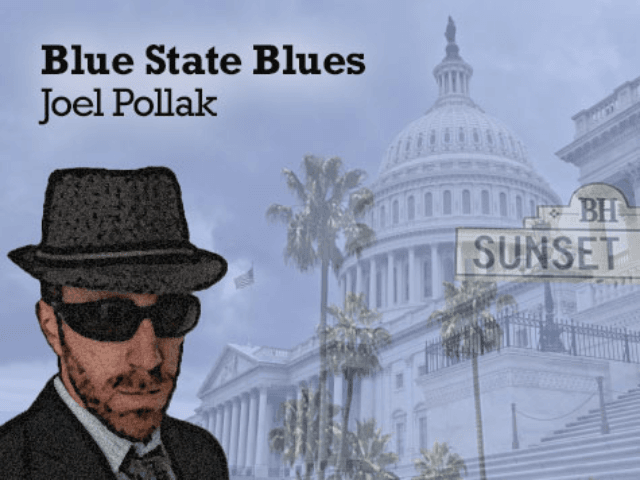President Barack Obama appointed one Republican to his cabinet, and the mainstream media gushed over his “team of rivals,” making effusive comparisons to Abraham Lincoln.
Obama himself boasted that his appointment of opposition party members was “unprecedented.” Politifact rated that claim as “true,” even though one of the “Republicans,” Secretary of Defense Robert Gates, was not registered with any party, and Sen. Judd Gregg (R-NH) later withdrew his nomination as Secretary of Commerce.
Many presidents appointed more — and more significant — rivals than Obama.
In their new book, JFK and the Reagan Revolution: A Secret History of American Prosperity, Larry Kudlow and Brian Domitrovic note that President John F. Kennedy appointed several Republicans — notably Secretary of the Treasury C. Douglas Dillon, an unsung hero of that iconic Democratic administration, who first proposed growing the economy by cutting income taxes.
Historian Doris Kearns Goodwin writes in Team of Rivals: The Political Genius of Abraham Lincoln — required reading among Beltway types in 2009 — that Lincoln “resolved … to surround himself with the strongest men from every faction of the new Republican Party,” including former Democrats.
His goal was to boost national unity, minimize external opposition, and have the best talents at his disposal. Most of his appointees were more experienced in government than he, and their supporters were often “violently opposed.”
Obama never lived up to the Lincoln billing. He made Democratic rival Hillary Clinton Secretary of State, but neither she nor Republican Secretary of Transportation Ray LaHood ever challenged his policies.
The reality is that the Obama White House was a left-wing monoculture, intolerant of dissent. The few independent-minded staffers left before the 2010 midterms — some reportedly booted by aide Valerie Jarrett and the First Lady.
In their place was a core of junior sycophants who worshipped Obama and did nothing to curb his excesses, even when it was clear he was leading the country into danger and his party into ruin.
Today, President Donald Trump has presented America with a real “team of rivals.”
The media tell us that there are three West Wing factions: one, the “populist nationalist” group, centered around Chief Strategist Steve Bannon; a second, the “establishment” ring, built by Chief of Staff Reince Priebus; and the third, the “Democrats,” connected to Trump’s son-in-law, Jared Kushner.
Yet all three supposed rivals worked together with Kellyanne Conway to produce Trump’s unlikely win in November.
Only Trump could have led a team of such diverse backgrounds, views and talents to victory — and in that sense, the success was uniquely his.
But each was also individually critical to a campaign that highlighted previously marginalized issues; that mobilized the Republican Party despite internal divisions; and that reached into the Democratic base to find new votes.
As Trump’s team turned to the task of governing, journalists — many of whom had bet on Trump losing — have set about magnifying, and inventing, internal differences.
Conservatives, too, who have always been nervous about Trump’s pragmatism, have begun to worry that some of his staff choices mean he will flip-flop on core issues — even though his performance in office has been largely consistent with what he promised his voters he would do.
The White House has tried to calm those fears — sending Bannon and Priebus out together at CPAC, for example — but the stories have only intensified.
Not all of the reporting has been agenda-driven. Some of it reflects the fact that Beltway journalists rarely face the challenge of working with people who disagree with them, and cannot fathom that anyone would relish the opportunity. Moreover, Trump’s own leadership style has famously prized internal competition as a form of motivation.
Regardless, understanding the Trump White House requires a sense of historical perspective. This is the first non-politician Americans have elected president. Moreover, he comes from a business world that emphasizes results, and measures them in brick and steel, not column inches.
Trump made key personnel concessions to conservatives, particularly on judges. Beyond that, he said he would hire whomever was best for the job, regardless of party. Unlike his predecessors, he seems to have meant it.
Those closest to Trump have praised the political diversity of his staff. It takes a certain maturity to be able to work with others with whom one may have profound disagreements.
When I am asked what it was like to work with Steve Bannon at Breitbart News, for example, that is what I emphasize — that we managed through all kinds of arguments, under pressure.
Trump’s “team of rivals” is likely here to stay, and America will be the better for it.
As Goodwin notes of Lincoln:
While it was possible that his team of rivals would devour one another, Lincoln determined that “he must risk the dangers of faction to overcome the dangers of rebellion.”
…
“We needed the strongest men of the party in the Cabinet. We needed to hold our own people together. I had looked the party over and concluded that these were the very strongest men. Then I had no right to deprive the country of their services.”
Lincoln’s White House endured conflicts, reshuffles and resignations — even rumors that Secretary of State William H. Seward was really running the country.
Lincoln made better decisions, and he became stronger, because of that internal turmoil.
Without comparing Trump to Lincoln, we may compare ourselves to the Americans of that day. Do we have the same patience to endure the fleeting ups and downs of West Wing rivalries, for the sake of a higher cause?
If not, why not?
Joel B. Pollak is Senior Editor-at-Large at Breitbart News. He was named one of the “most influential” people in news media in 2016. His new book, How Trump Won: The Inside Story of a Revolution, is available from Regnery. Follow him on Twitter at @joelpollak.

COMMENTS
Please let us know if you're having issues with commenting.